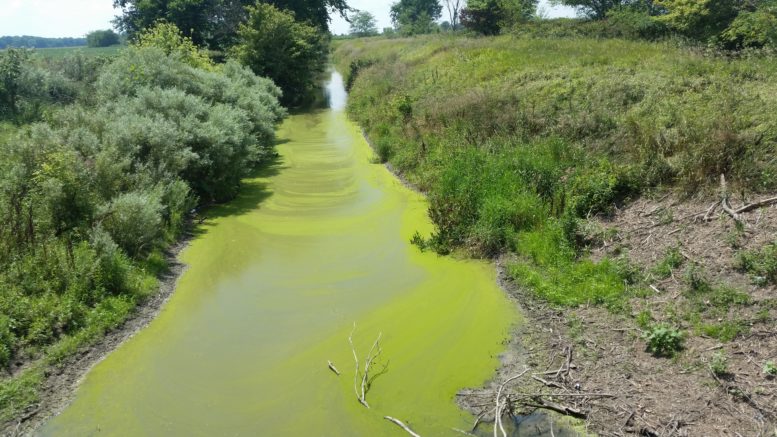(Submitted by Advocates for a Clean Lake Erie)
A Toledo environmental group today released a report showing that government failure to protect Lake Erie is causing much more harm than previously thought.
Advocates for a Clean Lake Erie (ACLE) revealed for the first time that measuring the impact of animal feeding factories on Lake Erie by the amount of phosphorus animals produce, not the volume of manure as previously measured, makes a staggering difference. Phosphorus is the main driver of the harmful algal blooms that plague Lake Erie every summer and animal feeding factories are increasingly seen as pandemic incubators.
ACLE researcher Marj Mulcahy said, “Nearly 25 million animals in over 800 animal feeding factories generate more phosphorus every year than the combined human populations of Ohio, Indiana, Delaware, Vermont, North and South Dakota, dumping it untreated, on fields that drain into Lake Erie. If that sounds shocking, it should. Hopefully, it will shock people into demanding it stop.”
“After filing open records requests with state governments, reviewing published reports, and analyzing the data through the lens of phosphorus (P2O5) production, it is painfully clear that state and federal governments have failed massively in their responsibilities to Lake Erie and the people who rely on it,” she added.
“When the Farm Bureau controls the Ohio Legislature and Big Ag lobbyists do the same in Washington, laws not only allow but encourage these feeding factories to use our lake as a free toilet and turn it toxic every summer,” said the group’s coordinator, Mike Ferner.
The environmentalists also highlighted how industrial agriculture has eroded democracy, when information about animal feeding factory operations is hidden from the public.
ACLE researcher Vickie Askins noted how the Ohio Department of Agriculture (ODA) has hidden reports that were once open to public review, contributing to the government’s “illusion of protection.”
“We researched over 80 ODA fact sheets for data about the number of Ohio-permitted facilities, animals, and amounts of manure in the WLEB. Previously these were posted on the ODA web site, but now we have to file public records requests to get them. Even then, the data and formatting are inconsistent, making it harder to see what’s going on. The industry is further protected from public oversight by regulations that allow millions of gallons of manure to be sold to ‘brokers,’ relieving operators from any responsibility to report what’s in it, where it goes, how it’s applied,” Askins said.
Beginning in 2016, ACLE relied on estimates that said waste from animal feeding factories in the Western Lake Erie watershed was equal to the combined sewage of Chicago and Los Angeles. A study issued in April, 2019, showed the amount was roughly twice that. But those reports measured the waste by volume and weight, not by the amount of phosphorus the animals produced.
The roughly 8,000 square mile watershed of Western Lake Erie consists of the Maumee River in Ohio, Indiana and Michigan, the Cedar-Portage and Sandusky Rivers in Ohio and the River Raisin in Michigan. The region was once known as the Great Black Swamp and today requires the most concentrated underground drainage system in the U.S. in order to be farmed.
ACLE endorses a moratorium on additional animal feeding factories and their eventual elimination, out of concern for the environment, rural communities and the suffering endured by the confined animals.

